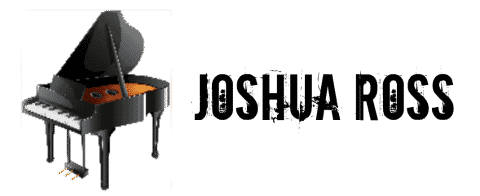As an Amazon Associate I earn from qualifying purchases.
At its essence, the piano produces sound when its keys are pressed, triggering hammers that strike tightly strung wires, creating vibrations that are amplified by the instrument’s soundboard. This mechanism might make you lean towards categorizing the piano as a stringed instrument.
However, the crucial action of hammers striking strings aligns the piano with the operational principle of percussion instruments. Notably, in the context of an orchestra, the piano is often grouped with percussion instruments for its role in rhythmically driving music and for the way its notes can be sharply struck or gently muffled.
Want to Learn Piano?Click Here

While the piano is capable of melodic play akin to stringed instruments like the violin or the cello, it is the percussive action that leads many musicians to perhaps consider it more in line with instruments like the xylophone or the marimba.
Despite these perspectives, the piano stands out as a chameleon in the music world; its capacity to emulate the sustained notes of strings and the definitive attack of percussion gives it a unique place in a musician’s repertoire.
Classification of the Piano

In exploring the identity of the piano, you’ll discover its multifaceted nature as both a stringed and percussion instrument.
Technical Considerations
The piano mechanically shares DNA with both stringed instruments, like the harp, and percussion instruments like the hammered dulcimer. When you press a key on a modern piano:
- A hammer strikes a string.
- The string’s vibrations are transmitted through the soundboard.
- This process results in the rich, full sound you hear.
Yet, unlike the harp where strings are plucked, the mechanism involves hammers, leading you into percussion territory. The act of tuning this instrument, much like a harp, involves adjusting the tuning of vibrating strings, further illustrating its dual nature.
Contemporary Views
Modern classification systems, particularly the Hornbostel-Sachs system, devised by scholars like Curt Sachs, categorize instruments based on how they produce sound.
According to this system, pianos are chordophones because they have strings that vibrate to produce sound. However, because those strings are set into motion by hammers, the piano is often welcomed into the percussion family by many contemporary musicians.
When you sit down at the keyboard, whether you identify as a percussionist or a pianist, you engage with both the precision of percussion and the melody of stringed instruments.
Piano Technique and Playing Styles
When exploring piano playing styles, you’ll find that the piano’s unique design places it at the crossroads of string and percussion instruments. Let’s take a look at how technique and playing styles highlight these facets.
Percussion Elements
Your approach to the piano keys can resemble that of playing percussion instruments such as the marimba or drums. When you strike a key, a felt-covered hammer inside the piano hits the strings, causing them to vibrate and produce sound.
This action is not unlike using drumsticks or mallets to play a rhythm on a drum head. You can experiment with different degrees of force and speed, much like a drummer would, to create variations in dynamics and articulation, thus contributing to the rhythm of the music.
String Dynamics
The strings of a piano are tuned to specific pitches, much like those of a guitar or violin. While you don’t pluck or bowthese strings directly, the way you play the keys can mirror the action of plucking strings on a guitar. A lighter touch can make the hammers strike the strings with less force, producing a softer sound, while a stronger touch can mimic the effect of plucking a guitar string with more vigor.
- Melodic Expression: Through controlling the attack on the keys, you influence the melody’s expression, allowing for a range of harmonic and melodic textures.
Piano in Ensemble
Playing piano within an ensemble, such as an orchestra, is a balancing act where your instrument fulfills both harmonicand rhythmic roles. You coordinate with other musicians, sometimes taking the foreground with a melody or providing rhythm and harmony to accompany a violin solo.
The piano complements string instruments as well as percussion instruments, adapting as needed for the musical context.
- Collaborative Dynamics: You adjust your playing style to blend with or stand out among other instruments, contributing to the collective musical expression.
Remember, every tap of the keys is a chance to explore the percussive nature of the piano, while the subsequent vibrationof the strings is an exploration of the piano’s identity as a string instrument.
Hello & thanks for stopping by! I’m a professional concert pianist and piano instructor. In the United States, I’ve given successful performances in several places including New York, Florida, Connecticut, & New Jersey, I have also performed internationally in Italy and made my Carnegie Hall debut in 2014. I enjoy blogging about the piano, the art of performance, general music, current events and the latest in music production.
